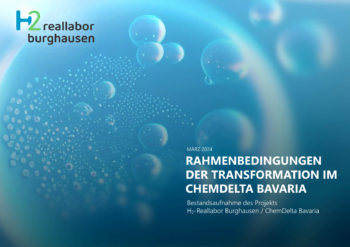Relevance and Potential for Industrial On-Site Electricity Generation on a European Scale
Published and presented at the 16th IAEE European Conference in Ljubljana, Slovenia
Context and Motivation for the Study
In the framework of Europe-wide emission reduction commitment, the present analysis investigates drawbacks and potential of a particular element of the electricity generation sector, which is the on-site generation of electricity by industrial firms. On-site generation thereby means the generation of electricity (and heat if using a cogenerating system) in spacial proximity to the consumption of the same electricity, where the very purpose of the electricity production is to supply power to a company’s production site. As industrial on-site generation constitutes an established mean of generating electricity during the last decades whenever conditions are favourable, little research has been conducted in recent years to cover the topic’s importance.
Especially when broadening the perspective on a European scale, on-site generation appears to be underrepresented in contemporary studies. Yet the hypothesis is that industrial power plants (IPPs) are operated in a fundamentally different manner than conventional plants of public supply most of the time and show little response to changes in the electricity market. If the proportion of on-site generated electricity represents a large fraction of the overall electricity production, such behaviour is critical in future considerations regarding the electric grid stability. A general European overview becomes valuable due to the interconnectedness of the electric sector, where no national grid is independent from the other.
Status Quo of On-Site Generation and National Characteristics
The analysis of the European Status Quo is part of the eXtremOS project, which the FfE is part of. Statistical data from various sources is used to provide an overview regarding industrial on-site electricity generation in 13 European countries. Figure 1 shows the proportion of on-site generated electricity in regard to the overall electricity production in these 13 countries. In total, 212 TWh of electricity are generated through IPPs, which underlines the high relevance of this part of the electricity provision sector.

Two thirds of the on-site generated electricity are generated by combined heat and power (CHP) systems, which is a much larger proportion than for the generation of general supply. When examining the employed energy carriers, it becomes evident that 59 % of the electricity is fossil fuel based. This again displays a much larger share than for the electricity generation of general supply. Thus, a fundamentally different energy provisions structure is determined for industrial on-site generation when compared with generators of general supply.
For a comparison on a national level, figure 2 shows the annual amount of on-site generated electricity for the investigated countries. National differences are especially striking in terms of energy source usage, where availability and cost-effectiveness dominate the picture. It is apparent, that both CHP-system usage and energy carrier shares differ significantly for each European state. The industrial structure of each country and its need for on-site generation are main drives here.

Implications for the European Electricity Sector
As 59 % of the electricity generated on-site is on average based on fossil energy sources, a transformation process of this part of the system is found to be inevitable in the future. Such a transformation process would change the typical modes of operation and motives for on-site generation. High potential for the future of on-site generation is seen in (1) the application of industrial power plants for power control purposes, (2) the preservation of important companies in Europe, (3) the cost-efficient expansion of renewables in industries and (4) the market participation of on-site generators to sell and purchase at wholesale markets. All of these potential changes must be empowered by national or European adjustments in regulations.


